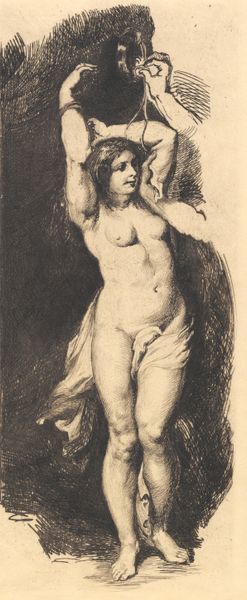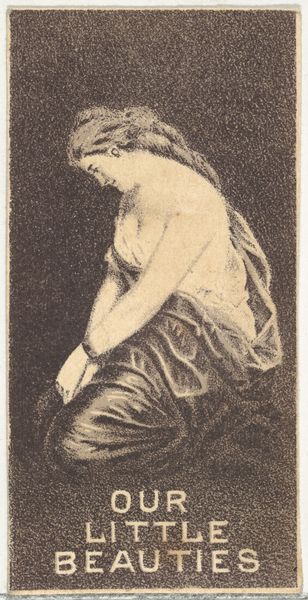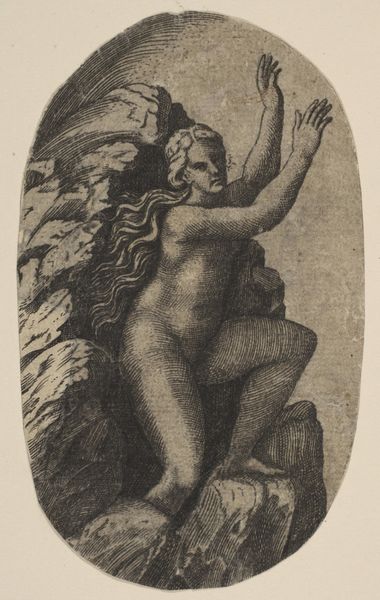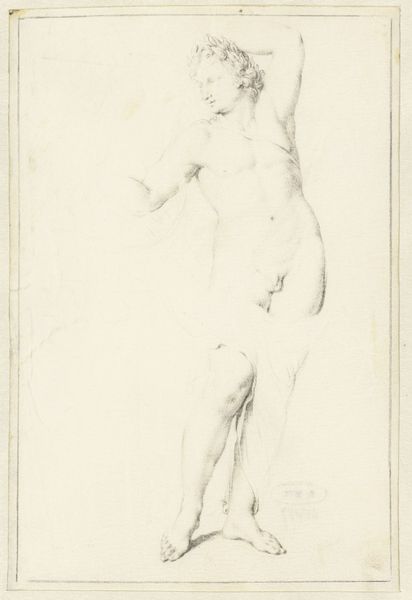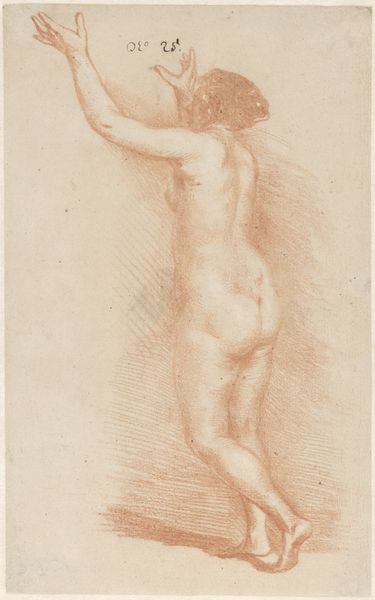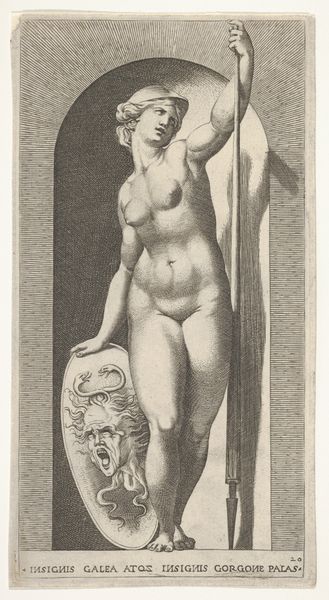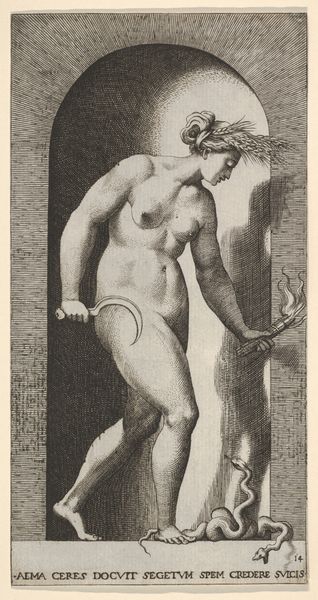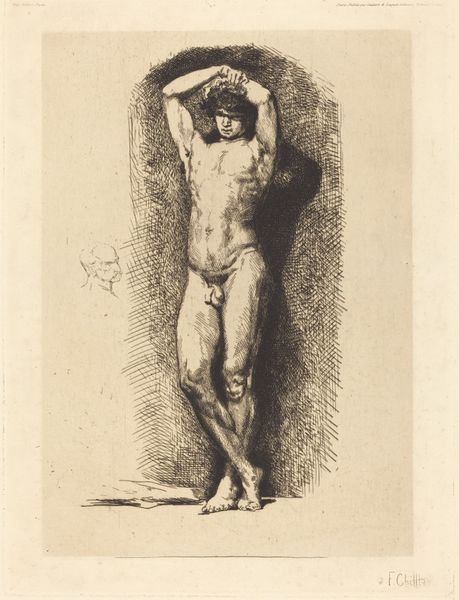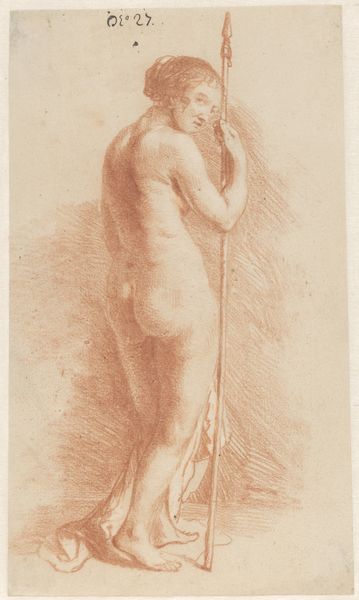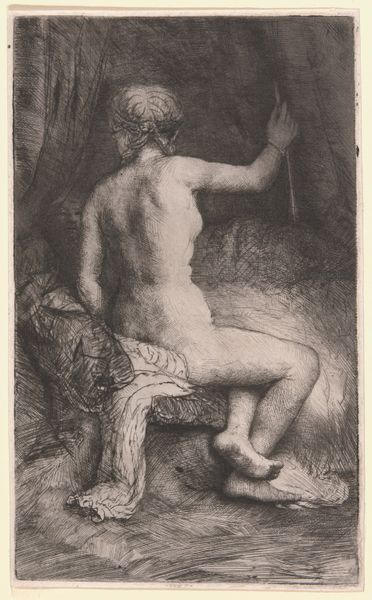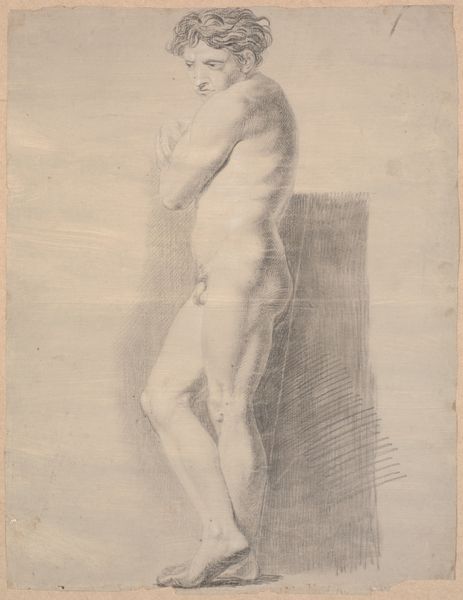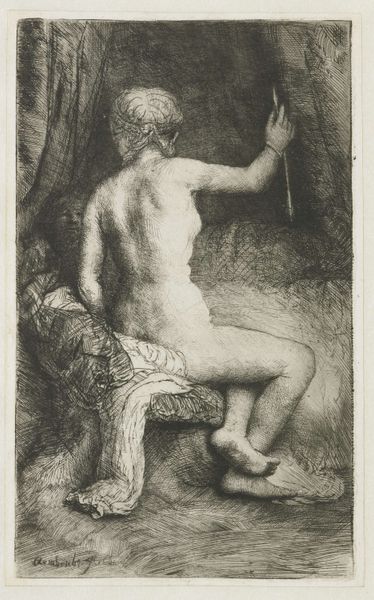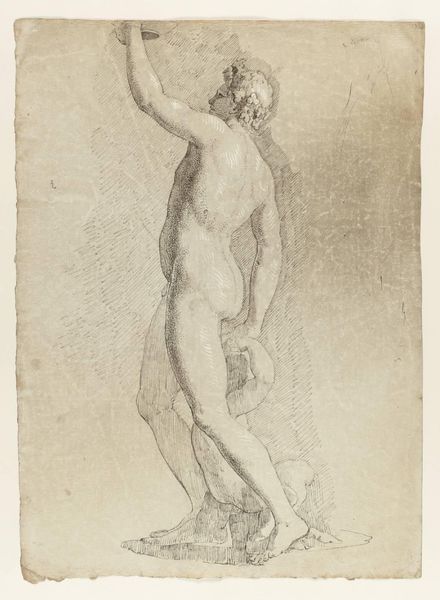
print, etching
#
pencil drawn
#
amateur sketch
#
light pencil work
# print
#
etching
#
pencil sketch
#
charcoal drawing
#
charcoal art
#
portrait reference
#
pencil drawing
#
portrait drawing
#
pencil work
Dimensions: 206 mm (height) x 88 mm (width) (plademaal)
Editor: Here we have Frans Schwartz's 1881 etching, "Andromeda, efter Rubens," currently held at the SMK. It feels like an intimate study, perhaps a practice piece referencing the master, Rubens. The hatching and sketchy lines create an interesting texture. What's your take on this interpretation of Andromeda? Curator: Well, viewing it historically, the act of copying or interpreting old masters was a crucial part of academic artistic training in the 19th century. It served as a method to legitimize artistic education via historic lineage and claim a position within a recognized artistic canon. Editor: Ah, I see! So, it's not just about the subject matter, but the statement the artist is making about their training and influences? Curator: Exactly. It invites questions about institutional art training and its societal implications. Consider who had access to such art education and the power structures these institutions reproduced. The artist chose a classical subject made popular by Rubens... what do you think this tells us? Editor: I guess that choosing Andromeda specifically… with its themes of female vulnerability, perhaps he aimed to align himself with Rubens’s own explorations of beauty, myth, and drama while showcasing academic skill. But it's interesting how the looseness contrasts with the idealized subject, and how art institutions influenced that skill... Curator: Precisely! How this piece demonstrates the societal forces and historical contexts within which art is made and valued. It challenges our viewing experience beyond the mere aesthetics or the artist's skill. It provokes us to delve into power, knowledge, and cultural capital as demonstrated within our shared cultural institutions. Editor: I hadn’t thought of it that way at all! Now, I am considering what "masterpieces" institutions focus on. Thanks. Curator: Indeed, examining art through a historical and institutional lens certainly adds another dimension of understanding to even the most familiar works.
Comments
No comments
Be the first to comment and join the conversation on the ultimate creative platform.
